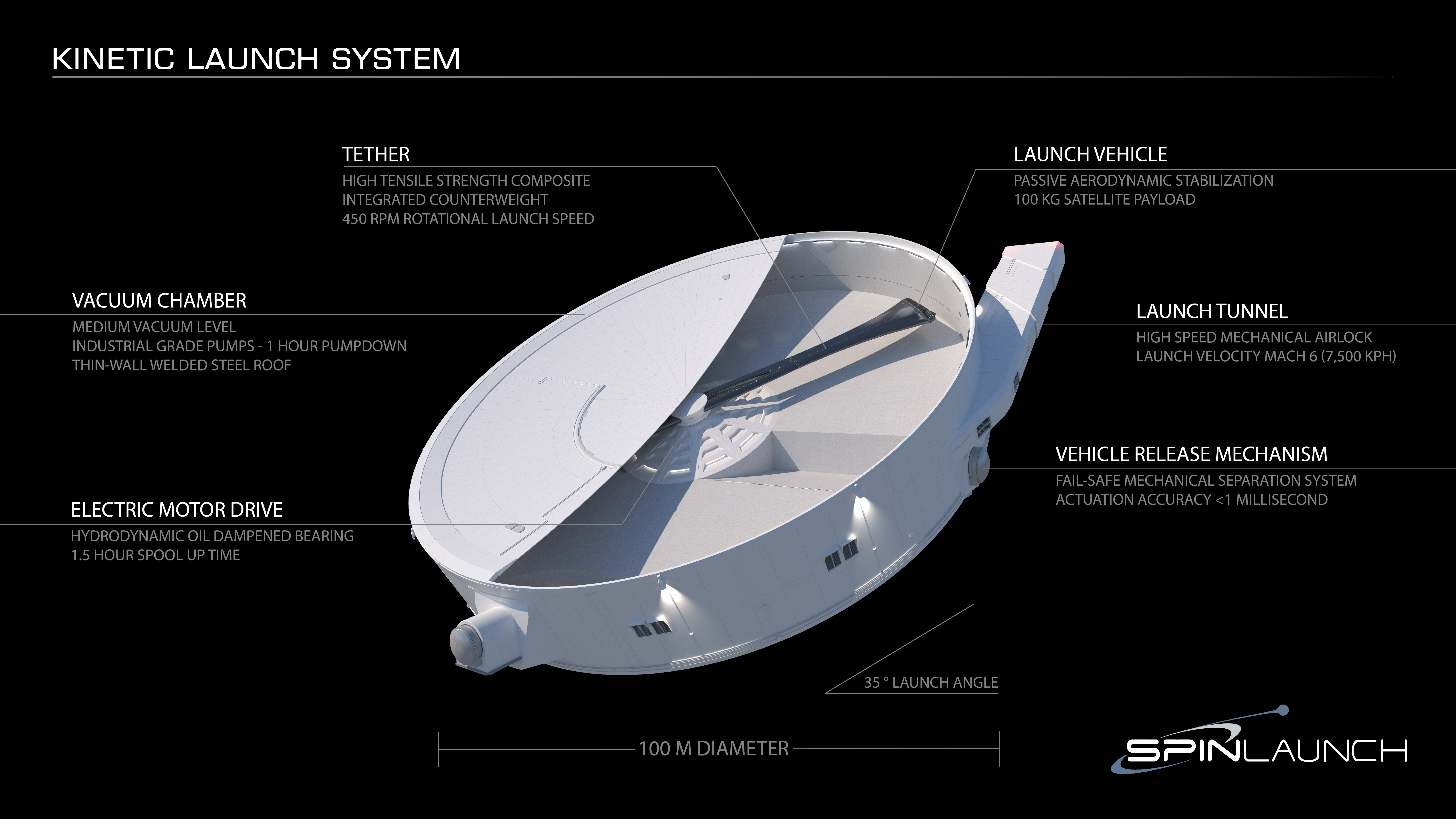SpinLaunch’s technique for sending payload to orbit, which uses centrifugal force to fling mass to space, has solicited its fair share of skeptics. But at least some of those skeptics are likely a little quieter today, as the company announced a notable new funding round to accelerate the commercialization of its kinetic launch system.
The company’s latest funding round comes in at $71 million, including equity and debt, and brings SpinLaunch’s overall funding to $150 million. The Series B round was led by ATW Partners and includes participation from Kleiner Perkins, GV, ATMA Capital, ONA Capital, Lauder Partners, McKinley Capital, Tyche Partners, as well as John Doerr, Brook Byers, Asher Delug, Chuck Brady, Andrew Farkas and Greg McAdoo.
SpinLaunch wants to completely transform how we move things to space. TechCrunch first considered the idea back in 2018, when the company came out of stealth. The launch system works like this: Instead of using a conventional rocket to vertically propel things to orbit, SpinLaunch wants to use an aerodynamic launch vehicle attached to a rotating arm in a large vacuum chamber. That arm will spin faster and faster, until it flings the vehicle to space at around 5,000 MPH.

Image Credits: SpinLaunch (opens in a new window)
The company’s already conducted test launches using a 33-meter system it calls a “suborbital mass accelerator” — during which they fired payload north of 1,000 MPH to nearly 30,000 feet — and they scored an agreement with NASA for further testing.
“We have completed nine successful flight tests to date, retiring the technical risk as we prepare the way for the construction of our full-size Orbital Launch system,” CEO Jonathan Yaney said in a statement. That full-scale system is expected to be three times that of the suborbital mass accelerator. SpinLaunch is also developing a mass-manufactured line of satellite products, presumably ones that are sufficiently G-hardened to endure the incredible about of G-forces that will likely be generated during launch.
The company said it was on target to put satellites in orbit using its system by 2026. While all tests have been conducted at Spaceport America in New Mexico, the company is in final selection for its first site for orbital launch.
SpinLaunch wraps up new round to fling payloads to space by Aria Alamalhodaei originally published on TechCrunch
DUOS





